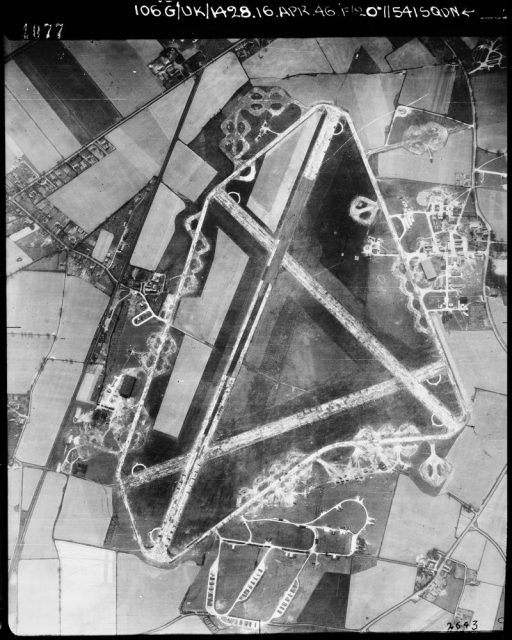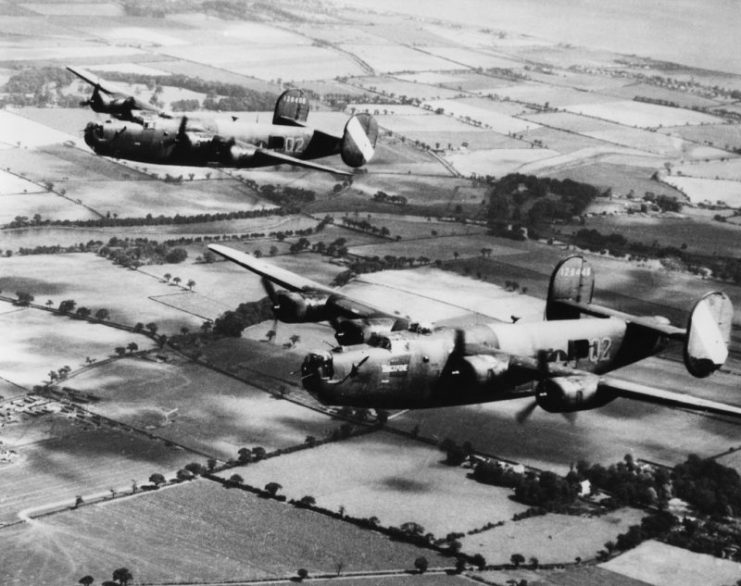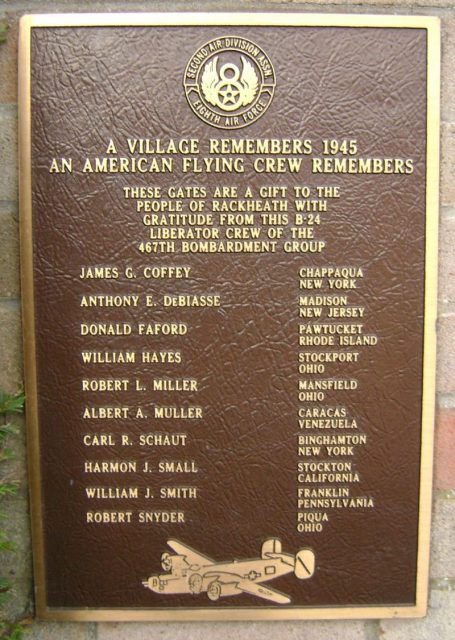The village of Rackheath lies in Norfolk, England, approximately six miles from Norwich. This beautiful English village has developed plans to revitalize the area including a WWII Memorial to ensure that the residents remember their military heritage.
The development will cover around 293 hectares and will stretch from Salhouse Railway Station in the east to Wroxham Road in the west. It will turn the village into a small town. Broadland District Council is undertaking the planning in conjunction with developers Barrat/David Wilson Homes and Manor Farms Ltd – the principal landowner of the property to be developed.
Unusual in modern developments is the provision for a WWII memorial. During the war, Rackheath played host to the United States Airforce, and in particular the USAAF 467th Bombardment Group, affectionately known as the Rackheath Aggies.

The 467th Bombardment Group was formed on August 1, 1943, in Utah, but amassed at Mountain Home Airfield in Idaho. They were based there from September 8 until the middle of October 1943. They then moved on to Wendover Field, Utah, where they undertook most of their training before they were sent to England in February 1944.
Their ground crew sailed to England on board the troop transport ship the USAT Frederick Lykes arriving on March 10, 1944. The aircrew flew their B24 Liberator bombers via the southern ferry route and landed at Rackheath where they all met up.
The first mission for the Aggies was a bombing run on April 10, 1944, to Bourges. Their final task was undertaken on April 25, 1945. In that time the Aggies flew 212 missions within 5,538 sorties and lost a total of 29 aircraft and 242 personnel.

During their time in England, the Aggies racked up two notable achievements. Their first was that, over their period at Rackheath, they had the same Commanding Officer, Colonel Al Shower which was very rare for any air wing at the time. The second achievement was that one of the B24’s, named Witchcraft, flew 130 missions with no turn-backs, a USAAF record. Not a single man was lost or injured on that plane, even though it suffered over 300 flak holes, had 13 engine changes and had to go to the sub-depot twice for repairs.
On June 12, 1945, the majority of the aircraft left Rackheath to return to the United States. The ground crew enjoyed more luxurious travel back to America, as they were accommodated on the Queen Mary and arrived on July 11, 1945.

The plans drawn up for the development of the area in Rackheath, envision the runway used by the Aggies will be transformed into a memorial park. It will have lights placed at the northern and southern gates, to mimic the pattern of the old runway lights and radar installations. There will also be lawns and colorful planting that will provide places for quiet contemplation. The existing memorial, which currently resides in the industrial area, will be moved to the park. The control tower and turning circle will be retained.
In addition to the memorial park, the development will bring some 3,000 new homes to the area, as well as shopping centers, a junior and senior school, sports fields with a pavilion and space for allotments. Approval from Broadlands District Council is expected to be sought in the next few months.
